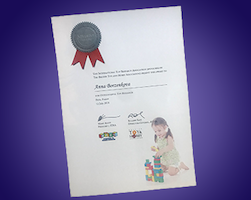Definitions
There are precise definitions for substances, mixtures and articles, which are taken from REACH as follows:
Substance(s): A chemical element and its compounds in the natural state or obtained by any manufacturing process, including any additive necessary to preserve its stability and any identified impurity deriving from the process used, but excluding any solvent which may be separated without affecting the stability of the substance or changing its composition. An example of a substance in a toy would be a container of sodium carbonate supplied in a chemistry set.
Mixture: A mixture or solution composed of two or more substances. Mixtures are common in toys and good examples would be finger paints, bubble solution and glues. Some toy products may be borderline articles and ECHA provides detailed guidance on how to determine if a product is a mixture or an article. One determination by ECHA considered that wax crayons were mixtures.
Article: An object which during production is given a special shape, surface or design which determines its function to a greater degree than its chemical composition.
Who is affected?
The obligations under CLP depend on the role of the supplier.
The definition of roles in this regulation differs from those in the Toy Safety Directive and it is recommended that you determine your particular role in the supply chain by using the guidance on the CLP regulation published by ECHA.
The toy companies mostly affected by CLP will be those supplying chemical toys including materials for creative play and other liquid toys, although it is advised that the company should determine their own particular obligations by reference to the ECHA guidance.
Obligations
1. Articles
The requirements for articles are limited to those where the substance in an article is present, is intended to be released and the amount of the substance imported exceeds one tonne per year, or the substance meets the criteria of a substance of very high concern present above 0.1% and the amount of the substance imported exceeds one tonne per year.
2. Classification of mixtures and substances
The obligation to classify is based on two pieces of legislation, the CLP regulation itself and the REACH regulation.
If obligated you must classify these substances or mixtures before placing them on the market, regardless of the tonnage manufactured, imported or placed on the market.
3. Ensure safety data sheets are produced in accordance with Article 31 of REACH
Safety data sheets include information about the properties of the substance or mixture, its hazards and instructions for handling, disposal and transport and also first-aid, firefighting and exposure control measures. The format and content of the safety data sheets are specified in REACH.
4. Labelling
Products need to be labelled if the substance or mixture is classified as hazardous, or if the mixture contains one or more substances classified as hazardous above the concentrations referred to in Part 2 of Annex II to CLP.
There are two EN71 standards for chemical toys. EN71-4: 2013 Experimental sets for chemistry and related activities and EN71-5: 2015 Chemical toys (sets) other than experimental sets. Both of these standards incorporate the labelling requirements of CLP.
It is important to note that while CLP allows a relaxation on the labelling elements for small packages, the toy standards require that all information must be on the package without limitation. Some chemical toys may not be within the scope of the standards and therefore the small packaging exemptions may be applied.
The labelling should include the following elements as appropriate:
- Name, address and telephone number of the supplier of the substance or mixture (already an obligation under TSD)
- Nominal quantity of the substance of mixture
- Product identifier (for mixtures the identity of all substances in the mixture that contribute to the classification of the mixture as hazardous)
- Hazard pictogram(s)
- Signal word(s)
- Hazard statement(s)
- Precautionary statement(s)
Labelling should be provided in the languages of the countries where the product is placed on the market.
5. Notification
Notification is required if you are an importer and the substance is:
- Subject to registration under REACH (> 1 tonne/year) and placed on the market;
- Classified as hazardous under CLP and is placed on the market, irrespective of the tonnage;
- Classified as hazardous under CLP and present in a mixture above the concentration limits specified in Annex I of CLP, which results in the classification of the mixture as hazardous, and the mixture is placed on the market.
- Retain records for 10 years after the substance of mixture was supplied.
Further information
CLP is a complex regulation and BTHA members are advised to refer to the original legal text or the official ECHA guidance if they think they may be affected. The ECHA guidance documents provide comprehensive interpretation of the regulation and can be found on the ECHA website: www.echa.europa.eu/regulations/clp
The regulation also provides for member states competent authorities to operate national help desks.
The competent authority in the UK is the Health and Safety Executive:
REACH and CLP UK CA Help Desk, Health and Safety Executive
2.3 Redgrave Court, Merton Road, L20 7HS Bootle, Merseyside
Email: ukreachca@hse.gsi.gov.uk




